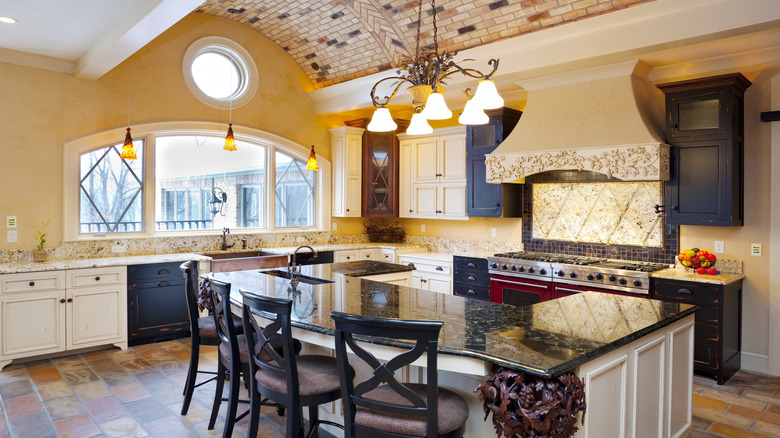Give Your Kitchen A Modern Industrial Look With This Unusual Flooring Option
When you think of a kitchen floor, you likely think of hardwood since it is one of the most popular types of flooring. Other popular varieties include tile, laminate, and vinyl. However, if you want to venture out of the box, consider brick. A brick kitchen floor is one flooring option that can help create an industrial look and bring a modern aesthetic to your home.
Understandably, a brick kitchen floor might seem unusual since most of us have become accustomed to finding brick mostly in outdoor areas or entryways. Yet there are brick tiles specifically made for indoors, and can foster various looks, from a rustic farmhouse to a stylish city ambiance. Furthermore and aesthetically speaking, brick can be a dream to work with. Brick flooring comes in various sizes and shapes, including dark to light red and gray as well as white colors, which offer some versatility.
Brick patterns can also be very tiny and encompass small bits, or large and made with single brick designs. They can be placed in straight or diagonal patterns, and it's these countless options for customization that makes DIYing a brick floor in your home so appealing.
Benefits of a brick kitchen floor
Aside from style, brick is a largely functional and strong material as flooring. Consider how many things go on in your kitchen on any given day, and you'll easily see why durability is a key factor. Brick floors are highly durable and one of the longest-lasting materials you can choose. It can last for decades and possibly longer than that.
On a practical note, a brick floor offers a safety factor in two distinct ways as well. First, it will not be affected by intense heat. In fact, a brick floor is fire-resistant and can keep a fire from spreading to the other side of the room. It also won't be scarred by dropping hot utensils or other items on the floor. Another inborn safety feature is that brick is a non-slip material unlike stained wood, laminate, or vinyl which can cause falls — though you can make your floors less slippery with different finishes. The natural surface of the brick provides a grip for shoes, socks, and even bare feet.
Drawback to brick in the kitchen
Brick may not be for everyone, though. As with any home styling choice, it all depends on what you like. Though its durability may be unmatched, it can be a cold, rough surface, especially in the winter — although oddly enough, it is warmer than porcelain tile. On the flip side, it can be uniquely cool and soothing when the weather heats up. If the brick itself is rougher than you'd like, a nice throw rug can add a touch of softness and comfort.
Before you add it to a floor, you have to make sure your kitchen is able to handle the substantial weight. Bricks are naturally much heavier than other flooring, so you have to be sure your floors are tough enough to handle it, especially if you are installing it on a second or third (or higher) floor. Bricks must also be sealed correctly to guard against mold and mildew forming inside them. If you decide that you love the look of brick but don't want to install it, you can also find vinyl, laminate, and porcelain tile flooring with brick patterns.


